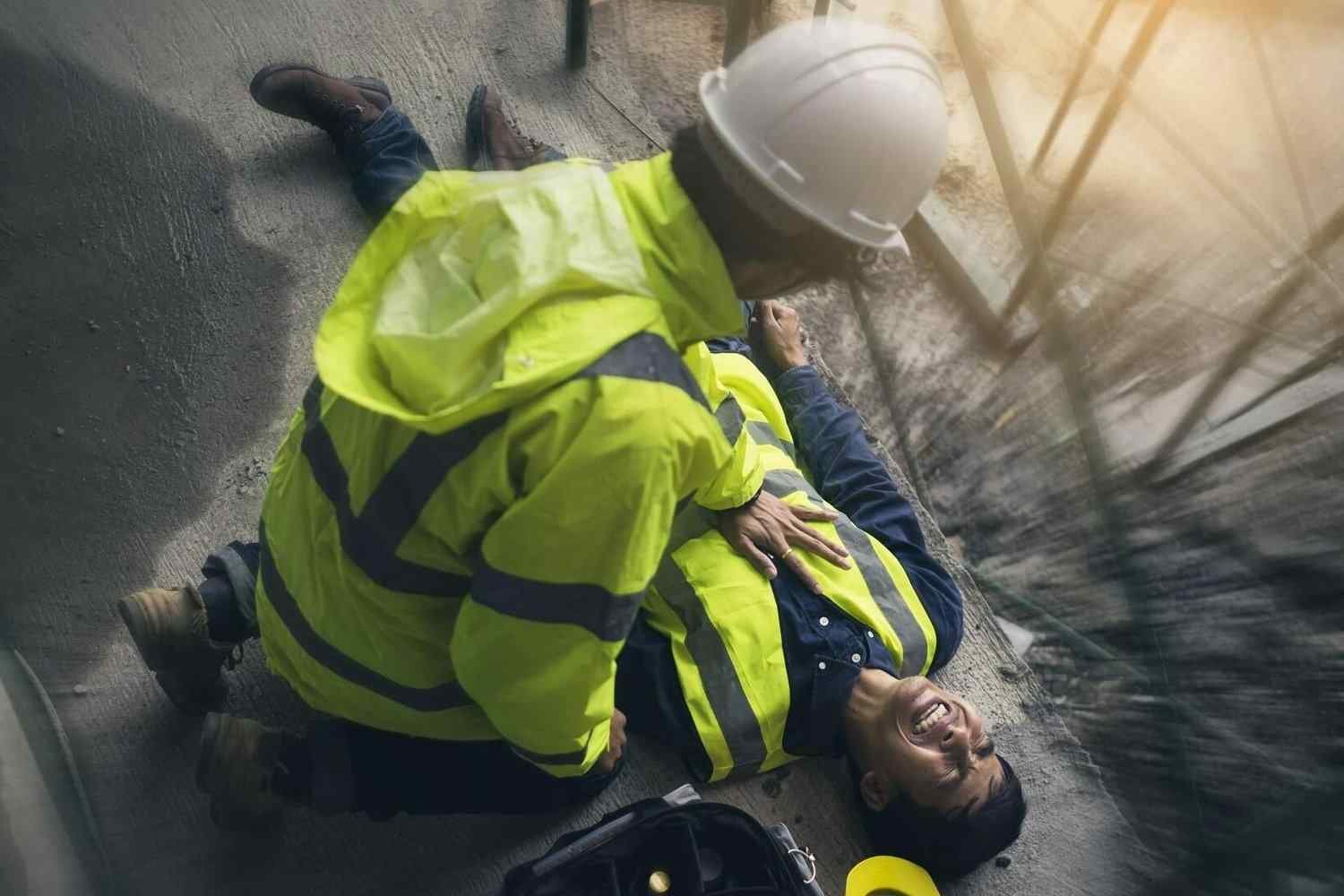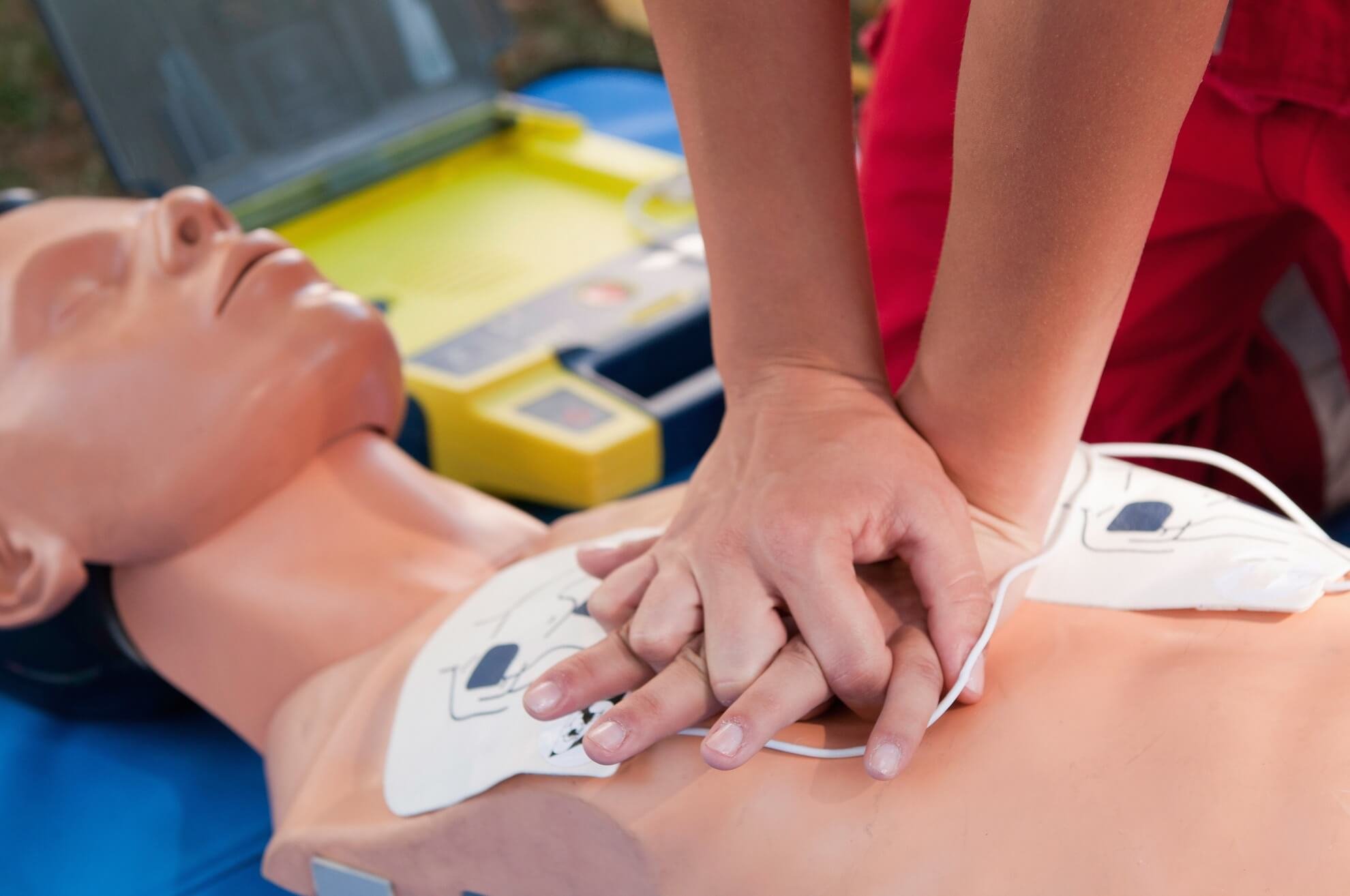Emergency First Aid At Work Training - Everything You Need To Know
In the realm of workplace safety, the empowerment and preparedness of employees through first aid training stand as pivotal pillars. Among the myriad of courses available, the Level 3 Award in Emergency First Aid at Work emerges as a cornerstone, designed specifically for environments assessed as having lower health and safety risks.
This introductory course not only meets legal compliance requirements but also instils a culture of safety and readiness to respond to health emergencies. This blog looks into the essence of this vital training, its applicability across various workplace settings, and its significance in fostering a safer working environment. Furthermore, we navigate through the landscape of first aid training, uncovering courses such as the comprehensive First Aid at Work, and Paediatric First Aid, and more, each tailored to meet the unique challenges of different sectors and situations. These courses collectively enhance the ability of workplaces to manage health crises effectively, ensuring that employees are not just workers, but guardians of safety and wellbeing. Join us as we delve into the critical world of first aid training, a fundamental aspect of workplace safety that goes beyond mere compliance, shaping a culture of care, responsiveness, and empowerment.
“The Smallest Act Of Kindness Is Worth More Than The Grandest Intention.”
What is covered on this course?
The Level 3 Award in Emergency First Aid at Work course is designed to equip individuals with the skills needed to provide emergency first aid in the workplace. This qualification is structured around a set of core topics that are essential for responding to a range of emergency situations. The specific content can vary slightly by training provider, but typically, the course covers the following key areas:
Understanding the Role of the First Aider: This includes the responsibilities of a first aider, how to minimize the risk of infection during first aid procedures, and the importance of consent.
Assessing an Incident: Learners are taught how to assess an incident safely, ensuring that they understand the sequence of actions to take in an emergency.
Management of an Unresponsive Casualty: This covers how to assess a casualty's level of consciousness, and the recovery position for an unresponsive but breathing casualty. It also includes how to manage a casualty who is not breathing normally, which includes CPR (Cardiopulmonary Resuscitation) and possibly the use of an Automated External Defibrillator (AED).
Recognition and Assistance of a Choking Casualty: Instruction on how to help a casualty who is choking.
Management of a Wounded or Bleeding Casualty: This includes the control of minor and significant bleeding, and how to manage shock.
Dealing with Seizures: Understanding and managing seizures.
Management of burns.
Provision of First Aid to a Casualty with Minor Injuries: This might include small cuts, grazes, and bruises.
The course is typically delivered in one day (approximately 6-7 hours of training) and includes both theoretical knowledge and practical exercises to ensure learners are able to apply their skills in real-world scenarios. The aim is to make workplaces safer by enabling employees to respond effectively to health emergencies.
Why is it applicable to the workplace?
The Level 3 Award in Emergency First Aid at Work is specifically tailored for the workplace due to several key factors:
Compliance with Health and Safety Regulations: In the UK, the Health and Safety (First-Aid) Regulations 1981 require employers to ensure that adequate and appropriate equipment, facilities, and personnel are available to provide immediate assistance to employees if they are injured or become ill at work. This course helps employers meet these legal obligations by providing designated staff with the necessary first aid skills.
Risk Assessment Alignment: Workplaces vary significantly in terms of size, hazards, and the nature of work conducted. The Emergency First Aid at Work course is designed as an entry-level qualification suitable for environments assessed as having lower health and safety risks. It provides fundamental skills that can be applied across a wide range of less hazardous workplaces, such as offices or shops.
Focused Content for Common Workplace Incidents: The course content is selected to address the most common health emergencies and injuries that could occur in a workplace setting, including handling unresponsive casualties, managing wounds and bleeding, and dealing with choking, seizures, and minor injuries. This ensures that first aiders are prepared to deal with situations that are more likely to happen in their specific work environment.
Promotes a Safer Work Environment: Having trained first aiders on-site can significantly reduce the severity of injuries or illnesses. Quick and effective first aid can prevent minor injuries from becoming major ones and can even save lives in critical situations. This contributes to a safer work environment, which is beneficial for both employees and employers.
Customization and Relevance: While the core curriculum of the course covers essential first aid skills, it can also be adapted or supplemented with additional training to meet the specific needs of a workplace. For example, a workplace with unique risks may require additional training on specific types of injuries or conditions related to its industry.
By focusing on these aspects, the Emergency First Aid at Work course ensures that employees designated as first aiders are equipped with the knowledge and skills to respond effectively to health emergencies, thus making the workplace safer for everyone.
What sort of workplace is this course suitable for?
The Level 3 Award in Emergency First Aid at Work is particularly well-suited for small to medium-sized workplaces that are assessed as having a lower level of health and safety risks. This can include a wide variety of settings where the nature of the work does not involve significant health hazards, and the work environment is relatively controlled. Examples of such workplaces include:
Offices and Administrative Sites: Where the work is predominantly desk-based and the physical risks are minimal.
Shops and Retail Outlets: Including small supermarkets, clothing stores, and other retail environments where there is public interaction but limited high-risk activities.
Libraries and Community Centers: Public spaces with low risk but a need for staff to respond to potential emergencies among users of the facility.
Restaurants and Cafés: Food service establishments where the primary risks might include minor cuts, burns, or slips, but not extensive hazardous conditions.
Small Workshops and Light Manufacturing Units: Places where machinery is used but the scale of operation and the nature of the machinery pose lower risks.
Hospitality Venues: Including hotels and small guesthouses, where there is a duty of care to both employees and guests.
Small Construction Sites or Maintenance Operations: Where the scale of construction or maintenance work involves fewer high-risk activities, and the number of workers is limited.
Fitness Centres and Gyms: Where the main risks involve sports injuries, such as sprains or minor trauma.
The Emergency First Aid at Work course is designed to be adaptable to the needs of various workplaces, ensuring that designated first aiders have the skills to manage common emergencies and injuries relevant to their specific environment. Workplaces with higher risks, such as large industrial sites, construction sites with significant hazards, or environments where specific health risks are present (e.g., chemical processing plants), may require more comprehensive first aid training, such as the First Aid at Work (FAW) course, which covers a broader range of emergencies and provides more in-depth training.
The importance of having adequately trained staff at your workplace.
Having suitably trained staff on site who have completed the Level 3 Award in Emergency First Aid at Work is crucial for several reasons, particularly in ensuring a prompt and effective response to health emergencies in the workplace. The importance of this can be outlined through the following points:
Immediate Response to Injuries and Illnesses: Trained first aiders can provide immediate care to colleagues suffering from injuries or sudden illness. This immediate response can be critical in saving lives, preventing conditions from worsening, or contributing to a quicker recovery.
Legal Compliance: UK employers have a legal duty under the Health and Safety (First-Aid) Regulations 1981 to ensure that first aid provision is available to employees who become ill or injured at work. Having staff trained through the Emergency First Aid at Work course helps employers meet these legal obligations by ensuring that first aiders are present and capable of responding to emergencies.
Enhanced Safety Culture: The presence of trained first aiders contributes to a culture of safety within the workplace, promoting awareness among all employees about the importance of health and safety measures. This can lead to more vigilant practices, reducing the likelihood of accidents and injuries.
Confidence in Handling Emergencies: Staff trained in emergency first aid feel more confident in their ability to handle health crises, which can be crucial in high-pressure situations where quick decision-making is essential.
Minimising the Impact of Accidents and Emergencies: Effective first aid can significantly reduce the severity of injuries or the duration of illness, potentially reducing the need for medical treatment or time off work. This not only benefits the affected individual but also minimises operational disruptions for the employer.
Public Responsibility: For workplaces that interact with the public, such as retail stores or hospitality venues, having trained first aiders can extend the duty of care to customers, enhancing public safety and potentially averting more severe consequences in the event of an emergency.
Cost-Effectiveness: Investing in first aid training can be cost-effective in the long term by reducing the severity of workplace injuries, lowering the need for medical intervention, and potentially decreasing insurance premiums or legal costs associated with workplace accidents.
Empowering Employees: Training empowers employees to act confidently and competently in emergency situations, not just in the workplace but in any setting, thereby extending the benefits of such training beyond the workplace environment.
In essence, the Level 3 Award in Emergency First Aid at Work serves not only as a compliance measure but as a fundamental component of a comprehensive health and safety strategy, enhancing the overall wellbeing and safety of the workplace and its employees.
What other courses out there are similar to this one?
In addition to the Level 3 Award in Emergency First Aid at Work, there are several other first aid courses designed to meet different needs and levels of risk in various environments. These courses expand upon or complement the skills taught in the Emergency First Aid at Work course, catering to more specific or advanced requirements:
First Aid at Work (FAW): A more comprehensive course than the Emergency First Aid at Work, typically delivered over three days. It covers a wider range of injuries and medical conditions, equipping attendees with the skills to act as first aiders in workplaces with higher levels of risk or more employees.
Paediatric First Aid: Specifically designed for professionals working with young children and infants, such as nursery and primary school staff. This course is often a requirement for those employed in the childcare sector and covers first aid techniques relevant to common injuries and health issues in children.
Outdoor First Aid: Tailored for individuals who work or spend a lot of time outdoors, such as outdoor instructors, guides, and scout leaders. This course covers first aid skills in the context of outdoor environments, where traditional medical assistance may not be immediately accessible.
Automated External Defibrillator (AED) Training: While AED training is often included in basic first aid courses, standalone courses are available for those looking to specifically learn how to use this life-saving equipment during cardiac emergencies.
Anaphylaxis: Focuses on the recognition and treatment of severe allergic reactions, including the use of auto-injectors like EpiPens. This is crucial training for workplaces and settings where individuals may be at risk of severe allergies.
Bespoke or Industry-Specific First Aid: NR Medical Training offer first aid training tailored to the specific risks and needs of different industries or professions, such as construction, or equestrian based businesses or centres.
These courses vary in duration, depth, and focus but all share the common goal of equipping individuals with the knowledge and skills to respond effectively to health emergencies. The choice of course depends on the specific needs of the workplace, the environment, and the individuals involved.
The Level 3 Award in Emergency First Aid at Work, is a course designed to equip employees with essential first aid skills tailored for lower-risk workplaces. This blog has highlighted its importance for legal compliance, immediate injury response, and fostering a safety-conscious culture. This course, focusing on managing unresponsive casualties, choking, wounds, and minor injuries, is ideal for environments such as offices, and retail outlets, among others. Beyond this foundational course, we also looked at a variety of other first aid training options, including the three-day First Aid at Work course, the Paediatric First Aid, and sector-specific courses, each addressing unique needs and enhancing the capability to respond to emergencies. These courses collectively contribute to workplace safety, ensure compliance with health and safety regulations, and empower employees to act confidently and effectively during health crises, ultimately creating safer environments for both employees and the public.








